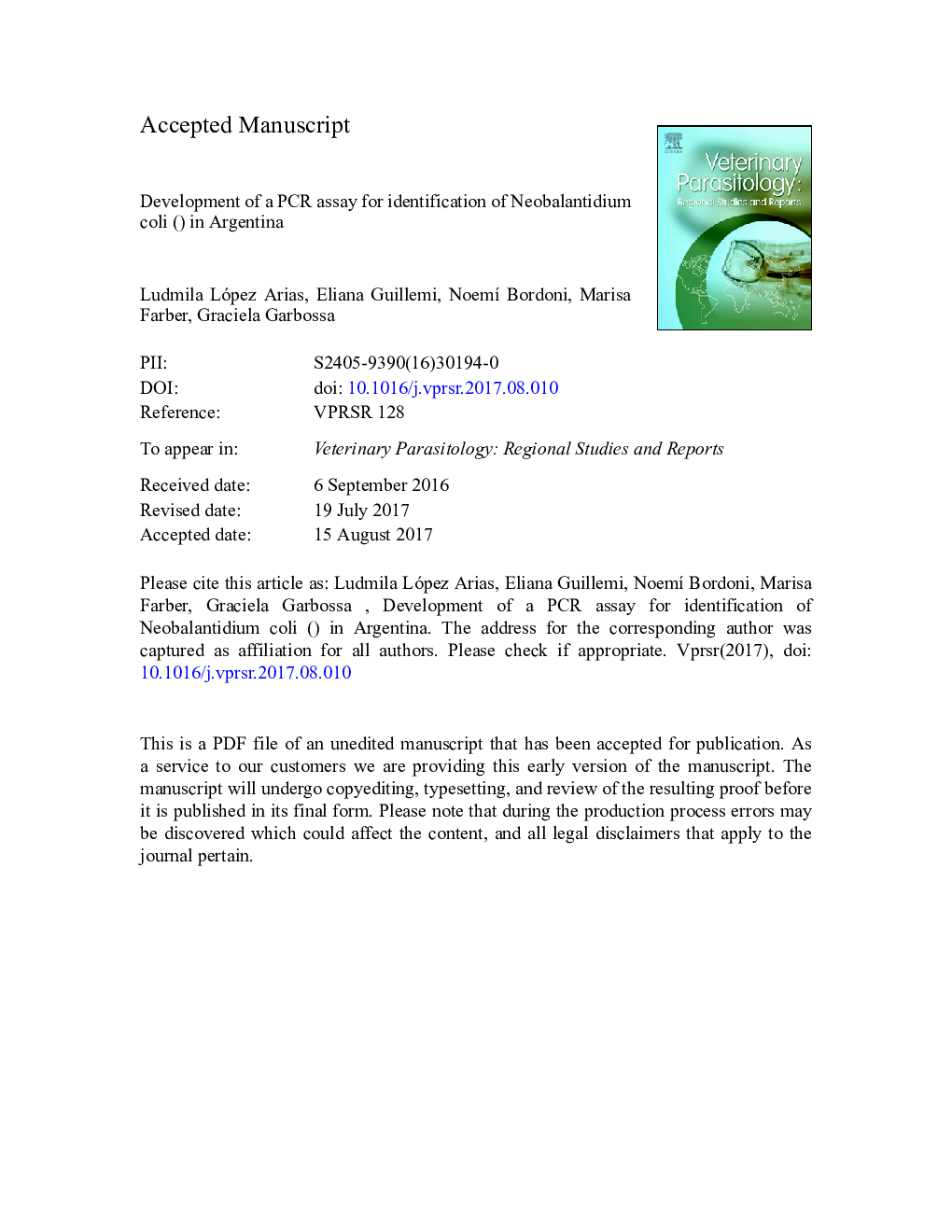| کد مقاله | کد نشریه | سال انتشار | مقاله انگلیسی | نسخه تمام متن |
|---|---|---|---|---|
| 5545993 | 1555864 | 2017 | 21 صفحه PDF | دانلود رایگان |
عنوان انگلیسی مقاله ISI
Development of a PCR assay for identification of Neobalantidium coli (PomajbÃková et al., 2013) in Argentina
دانلود مقاله + سفارش ترجمه
دانلود مقاله ISI انگلیسی
رایگان برای ایرانیان
موضوعات مرتبط
علوم پزشکی و سلامت
علوم و ابزار دامپزشکی
علوم دامپزشکی
پیش نمایش صفحه اول مقاله

چکیده انگلیسی
Neobalantidium coli (PomajbÃková et al., 2013) is a cosmopolitan ciliate which colonizes the intestine of humans and animals. Pigs are the most important host and reservoir for this parasite, although others mammals have been described. Humans can acquire the disease through the ingestion of water and food contaminated with cysts and even from person to person contact. Farmers and slaughterhouse workers from rural areas of developing countries have an increased incidence of balantidiosis. In Argentina, despite swine production on family farms covers 70% of domestic consumption requirements; there is a lack of veterinary animal health planning which result in high rate of animal mortality, as well as environmental risk due to inefficient facilities and mismanagement of manure and effluents. At present there are no epidemiological data on balantidiosis in Argentina, except for isolated reports. Therefore, the aims of this study were to establish the frequency of N. coli in pigs raised under different conditions and to explore the zoonotic potential. In order to confirm the identity of Neobalantidium coli like-cysts founded in the feces, a set of N. coli specific primers based on 18S rRNA gene sequences was designed. The molecular identification of N. coli was performed in 88.9% (16 out of 18) of swine stool samples in which cysts had been visualized. The fecal samples obtained from pigs raised on more open farmland showed a lower percentage of N. coli than those obtained from animals raised in swine pens. On the other hand, molecular identification of N. coli was also performed in human feces. Pairwise comparison of sequences obtained from pigs and human fecal samples from the NW Region of Argentina showed a high percentage of similarity, indicating a possible zoonotic transmission.
ناشر
Database: Elsevier - ScienceDirect (ساینس دایرکت)
Journal: Veterinary Parasitology: Regional Studies and Reports - Volume 10, December 2017, Pages 114-118
Journal: Veterinary Parasitology: Regional Studies and Reports - Volume 10, December 2017, Pages 114-118
نویسندگان
Ludmila López Arias, Eliana Guillemi, Noemà Bordoni, Marisa Farber, Graciela Garbossa,